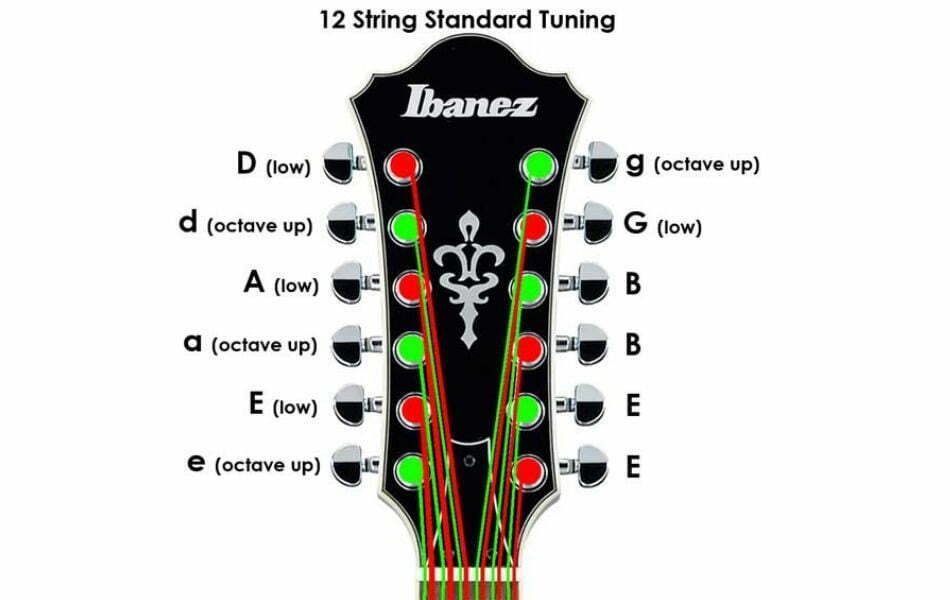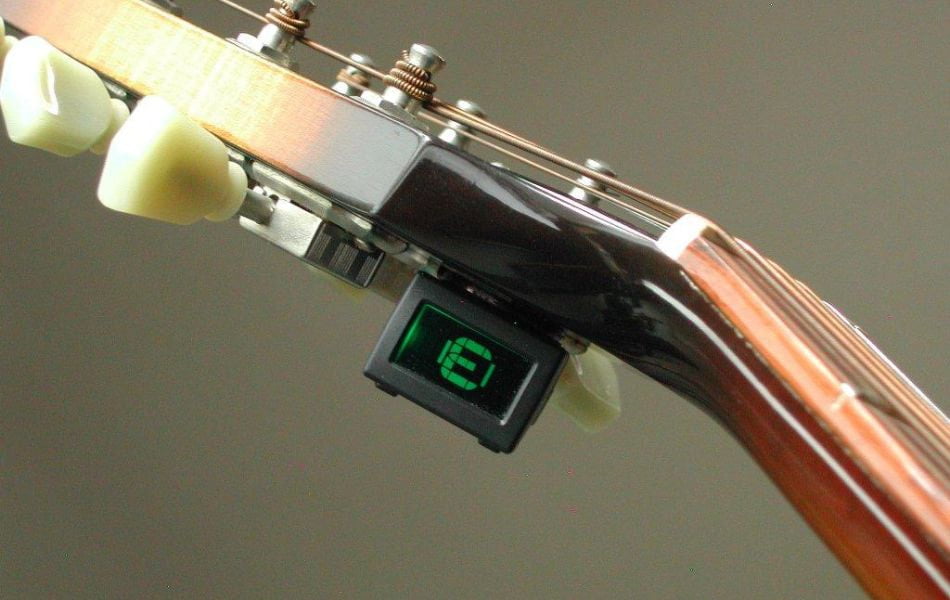The Enchanting World 12-string standard tuning
12-String standard tuning can indeed be overwhelming, especially if you are new to it. As you gain experience and become more familiar with the process, it will become easier and more manageable.
12-String guitar notes
Before learn about 12-string standard tuning, you must know some information. In contrast to the standard guitars, a 12-string guitar is a unique kind of instrument that contains 12 strings.
With each pair having two strings tuned to the same pitch, the 12 strings are grouped into six pairs. The pairs are usually tuned in unison, which means that each pair's two strings play the same note.
Due to the additional octave strings, a 12-string guitar's tuning is typically the same as a conventional 6-string guitar. The 12-string guitar notes are the same as those on a standard 6-string guitar, meaning the basic chords, scales, and melodies are all familiar to guitarists.
However, the 12-string guitar is especially well-suited for genres like folk, rock, and some acoustic. It is because the doubled strings provide complexity and richness to the sound and allow its lush and harmonically rich tone to shine.

12-String standard tuning
How to tune 12 string guitar standard
12-String standard tuning is similar to a regular 6-string, 7-string, or 8-string guitar tuning. To achieve this, you require a dedicated tuning tool such as the Guitar Tuner app, Chromatic tuner, or a clip-on tuner. These devices aid in identifying the precise sound frequency that each string must attain.
Once you have the tuning tools at your disposal, you should commence the tuning process starting from the lowest string (E2), which is typically situated at the top near the neck when the guitar is held.
Subsequently, you proceed to tune the A2, D3, G3, B3, and finally the E4 (highest E string). After tuning the lowest 6 strings (E2, A2, D3, G3, B3, E4), you must repeat the same process to tune the top 6 strings (E3, A3, D4, G4, B2, E3).
Keep in mind that accurately tuning your strings according to the correct frequencies (in the order of E, A, D, G, B, E) is crucial to achieving the right sound on your 12-string guitar and creating music that is rich and harmonious.

The correct pitch of the 12-string standard tuning
Here are the specific frequencies for each string in the standard 12-string guitar tuning. Ensuring that you tune your strings to these frequencies will help achieve the correct standard pitch and create beautiful and harmonious music. Please check carefully and repeat the tuning process for each string to ensure accuracy and effectiveness.
- E2 (low E string) - 82.41 Hz
- A2 (A string) - 110.00 Hz
- D3 (D string) - 146.83 Hz
- G3 (G string) - 196.00 Hz
- B3 (B string) - 246.94 Hz
- E4 (high E string) - 329.63 Hz
- E3 (low E string, same higher frequency) - 164.81 Hz
- A3 (A string, same higher frequency) - 220.00 Hz
- D4 (D string, same higher frequency) - 293.66 Hz
- G4 (G string, same higher frequency) - 392.00 Hz
- B2 (B string, same higher frequency) - 246.94 Hz
- E3 (high E string, same higher frequency) - 329.63 Hz
12-String standard tuning is no more challenging than tuning a 6-string guitar. The similarity in string layout between the two makes the process much more manageable. Remember to rely on a good quality tuner, as it will greatly assist you in achieving accurate tuning. Additionally, be patient and take your time during the tuning process to ensure each string is precisely tuned for optimal sound quality.








